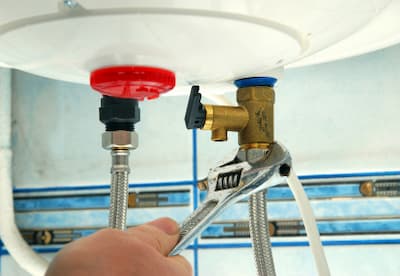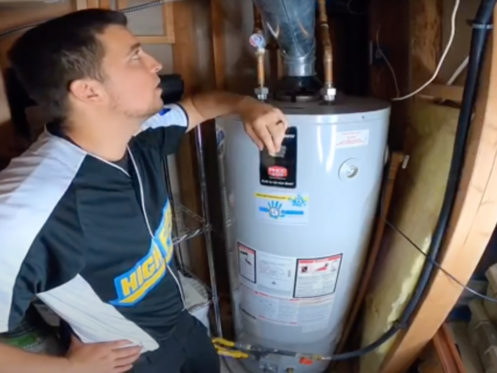How to Properly Maintain Your Home's Hot Water System
How to Properly Maintain Your Home's Hot Water System
Blog Article
Listed here below you will find some awesome insight in relation to Tips on Maintaining a Water Heater.

Hot water is important for day-to-day convenience, whether it's for a rejuvenating shower or washing meals. To ensure your warm water system runs efficiently and lasts much longer, routine maintenance is crucial. This write-up gives sensible ideas and insights on how to maintain your home's hot water system to stay clear of disturbances and expensive repair services.
Introduction
Keeping your home's warm water system might seem complicated, however with a few straightforward actions, you can guarantee it operates smoothly for several years to find. This overview covers every little thing from comprehending your warm water system to DIY upkeep suggestions and understanding when to contact specialist help.
Importance of Keeping Your Hot Water System
Regular upkeep not just expands the lifespan of your hot water system yet additionally ensures it runs successfully. Neglecting upkeep can result in reduced effectiveness, greater power costs, and even early failing of the system.
Indicators Your Hot Water System Demands Upkeep
Understanding when your hot water system needs attention can protect against major concerns. Watch out for signs such as inconsistent water temperature level, odd sounds from the heater, or rustic water.
Purging the Hot Water Heater
Purging your hot water heater eliminates sediment build-up, boosting efficiency and lengthening its life.
Monitoring and Changing Anode Rods
Anode poles prevent rust inside the storage tank. Examining and replacing them when broken is important.
Complex Problems Requiring Expert Help
Instances consist of significant leakages, electrical problems, or if your hot water heater is constantly underperforming.
Regular Specialist Upkeep Perks
Expert upkeep can include detailed evaluations, tune-ups, and ensuring compliance with security standards.
Examining and Changing Temperature Settings
Adjusting the temperature level settings guarantees optimal efficiency and security.
DIY Tips for Upkeep
You can carry out numerous maintenance jobs on your own to maintain your hot water system in leading condition.
Looking for Leaks
On a regular basis evaluate pipelines and links for leakages, as these can bring about water damages and higher expenses.
Recognizing Your Warm Water System
Prior to diving right into upkeep tasks, it's helpful to comprehend the fundamental components of your hot water system. Typically, this includes the water heater itself, pipes, anode poles, and temperature level controls.
Monthly Maintenance Tasks
Regular monthly checks can help catch minor issues before they escalate.
Evaluating Pressure Alleviation Valves
Examining the stress relief valve ensures it functions properly and prevents excessive stress buildup.
Shielding Pipes
Insulating hot water pipes lowers warmth loss and can conserve energy.
When to Call a Professional
While DIY upkeep is useful, some problems need specialist experience.
Conclusion
Routine upkeep of your home's warm water system is vital for efficiency, durability, and price savings. By following these ideas and recognizing when to look for professional help, you can make sure a reliable supply of hot water without unexpected disruptions.
How to Maintain an Instant Hot Water Heater
Before tinkering with your hot water heater, make sure that it’s not powered on. You also have to turn off the main circuit breaker and shut off the main gas line to prevent accidents. Also turn off the water valves connected to your unit to prevent water from flowing into and out of the appliance. 2. When you’re done, you have to detach the purge valves’ caps. These look like the letter “T†and are situated on either side of the water valves. Doing so will release any pressure that has accumulated inside the valves while at the same time avoid hot water from shooting out and burning your skin. 3. When the purge valves’ caps are removed, you have to connect your hosing lines to the valves. Your unit should have come with three hoses but if it didn’t, you can purchase these things from any hardware or home repair shops. You can also get them from retail stores that sell water heating systems. Read the user’s manual and follow it to complete this task properly. When the hosing lines are connected, open the purge port’s valves. 4. You should never use harsh chemical cleaners or solutions when cleaning your unit. Make use of white vinegar instead. It should be undiluted and you’ll probably use about 2 gallons. 5. Now flush your water heater. This task should probably take about 40 minutes. We can’t give you specific directions for this because the procedure is carried out depending on the type, model and brand of your heater. With that being said, refer to the user’s manual. 6. When you’re done draining the unit, you have to turn off the purge port valves again. Remove the hosing lines that you earlier installed on each of the water valves. Put the valve caps (purge port) back in their respective places and be very careful so as not to damage the rubber discs that are found inside these caps. 7. Now that everything’s back in place, check your user’s manual again to find out how to reactivate your water heating system. 8. Once it is working, turn one of your hot water faucets on just to let air pass through the heater’s water supply pipes. Leave the tap on until water flows smoothly out of it. https://www.orrplumbing.com/blog/2014/september/how-to-maintain-an-instant-hot-water-heater/

Do you enjoy reading about Tips on Maintaining a Water Heater? Put feedback directly below. We would be delighted to listen to your insights about this content. Hoping that you visit us again later on. Enjoyed our piece? Please quickly share it. Let somebody else discover it. Thank you for being here. Please visit our blog back soon.
Pricing Report this page